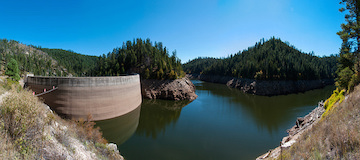
A watershed, also referred to as a “catchment” or a “drainage system,” comprises the land draining into a particular body of water. Watersheds have a huge impact on human communities because pollution can filter through the system and have many more wider-reaching implications than are immediately apparent. Lack of proper management, which often involves engineering projects like levees, can lead to flash floods, erosion, and other dangers.
Despite health and safety hazards, many people do not fully appreciate the necessity of taking care of these systems because they’re not aware of what they are and how they work. Below are some common questions and answers about this vital environmental component.
What is a watershed?
A watershed is the specific area of land that drains into a body of water. This means that it can be any size. For example, the catchment of a backyard creek is a lot smaller than that of the Mississippi River, which has the fourth-largest watershed of any river in the world (after the Amazon, Congo, and Nile). The Mississippi watershed covers almost 40% of the continental United States.
How does the system work?
Water enters the watershed of a river, lake, or ocean from two main sources. One source is smaller streams, rivers, or drainage areas that flow into larger bodies of water. For example, a tiny creek in Montana could eventually join the Missouri River and then the Mississippi River, thereby contributing to the Mississippi River’s overall watershed. Since the Mississippi River drains into the Atlantic Ocean, the river and its catchment are also part of the larger catchment of the Atlantic Ocean, a catchment which includes the Congo and Amazon rivers as well.
The other major contributor is precipitation. Rain and snow that doesn’t land in a body of water seeps into the soil, and much of this eventually finds its way into underground streams that join the rest of the watershed process.
A better understanding of this process will hopefully increase awareness of the need for proper watershed management and measures against pollution.

